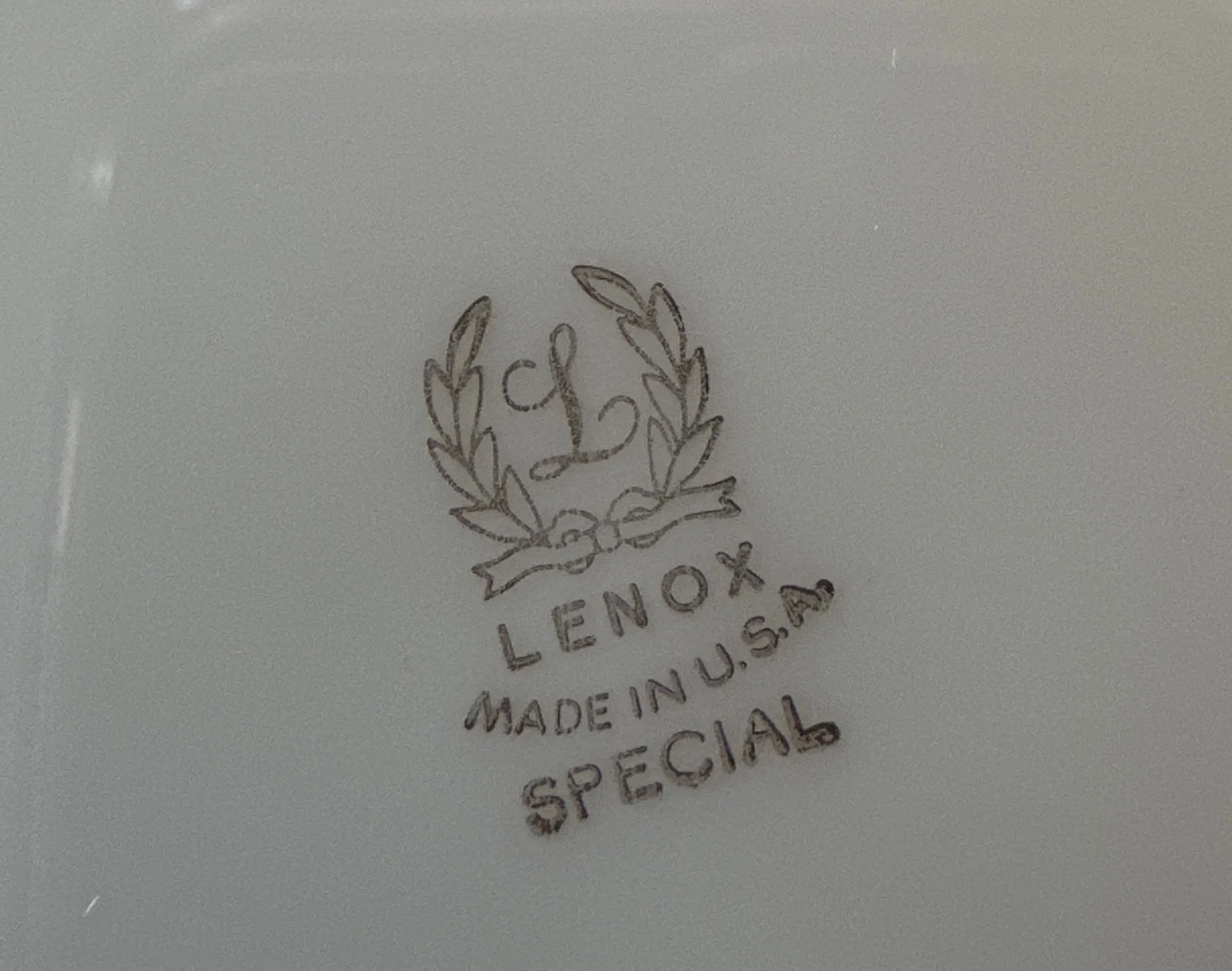Lenox bone china and porcelain: know the difference
Understanding Lenox Porcelain: What Collectors Should Know
Lenox has been cherished for generations as one of America’s finest makers of luxury tableware. From elegant holiday designs to timeless everyday patterns, Lenox pieces have graced family tables for more than a century. But many collectors are surprised to learn that Lenox produced both porcelain and bone china, depending on the pattern and production period.
Below is a simple guide you can use to identify and understand the materials behind your Lenox pieces.
Lenox “Fine Ivory China” — The Signature Porcelain
For most of its history, Lenox became known for its iconic Fine Ivory China. Despite the name, this material is technically porcelain:
Fired at high temperatures
Durable and vitrified
Smooth, slightly translucent body
Soft ivory glow that became a Lenox hallmark
Collectors can spot these pieces by the various backstamps used over the decades, such as the Lenox wreath, “Made in U.S.A.,” or special designations like “SPECIAL” or “GOLD.”
If the backstamp only says Lenox, Made in U.S.A., or Ivory China, you are holding a Lenox porcelain piece.
When Lenox Used True Bone China
Lenox also produced select patterns in bone china, a premium porcelain body blended with bone ash. Bone china is known for:
Exceptional translucency
A brighter, whiter body
A lighter feel in the hand
Most importantly, Lenox always marked bone china clearly. Look for backstamps that include:
“Lenox Bone China”
“Bone China • USA”
Or pattern-specific markings that spell out “bone china”
If “bone china” is printed on the bottom, the identification is certain.
Why the Difference Matters
Both porcelain and bone china are beautiful and collectible, but knowing which you have helps with:
Accurate pricing
Listing pieces correctly online
Matching replacements to your existing set
Identifying special-order lines like “SPECIAL” retailer editions
Popular patterns such as Lenox Holiday, Eternal, and Mansfield were traditionally produced in ivory porcelain, while commemorative or premium lines sometimes came in bone china.
A Simple Rule for Collectors
**If the backstamp says “Bone China,” it is bone china.
If it doesn’t, it’s Lenox porcelain.**
No guesswork required — Lenox labeled bone china explicitly.
